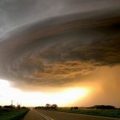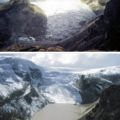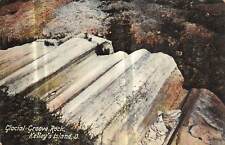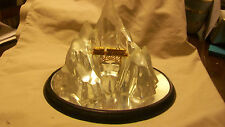
European Alpine glacial cover will decrease by 80 percent if summer temperatures increase by 5 degrees Fahrenheit, say scientists from the University of Zurich, and will disappear completely by 2100 if temperatures reach 9 degrees Fahrenheit. These alarming predictions, based on numerical modeling experiments, are due to be published in the July 15th edition ofGeophysical Research Letters.
Scientists view glaciers as miners regard the proverbial canary in a mineshaft, as they can disclose intimate details of climate change. Glaciers are observed closely for signs of reduced area and dramatic tongue retreats, as these represent unambiguous signs of atmospheric warming. Based on these indicators, researchers in Zurich are now making the staggering claim that only the largest of glaciers, such as the Great Aletsch Glacier in Switzerland, or those on the highest of peaks would survive into the 22nd century.
Glaciologist Michael Zemp and his colleagues at the University of Zurich, back these claims with some very sobering statistics.
The Intergovernmental Panel on Climate Change (IPCC) adds weight to the Zurich team’s findings, calculating that a 2 to 9 degree increase in summer air temperatures by the end of this century is a completely plausible scenario. The Zurich team claims that for every 2 degree Fahrenheit rise in mean summer temperature, at least a 25 percent increase in precipitation is needed to offset further glacial loss. “In densely populated high mountain areas such as the European Alps, one should start immediately to consider the consequences of such extreme glacier wasting on the hydrological cycles, water management, tourism, and natural hazards,” warns Zemp.


















Comments are closed.